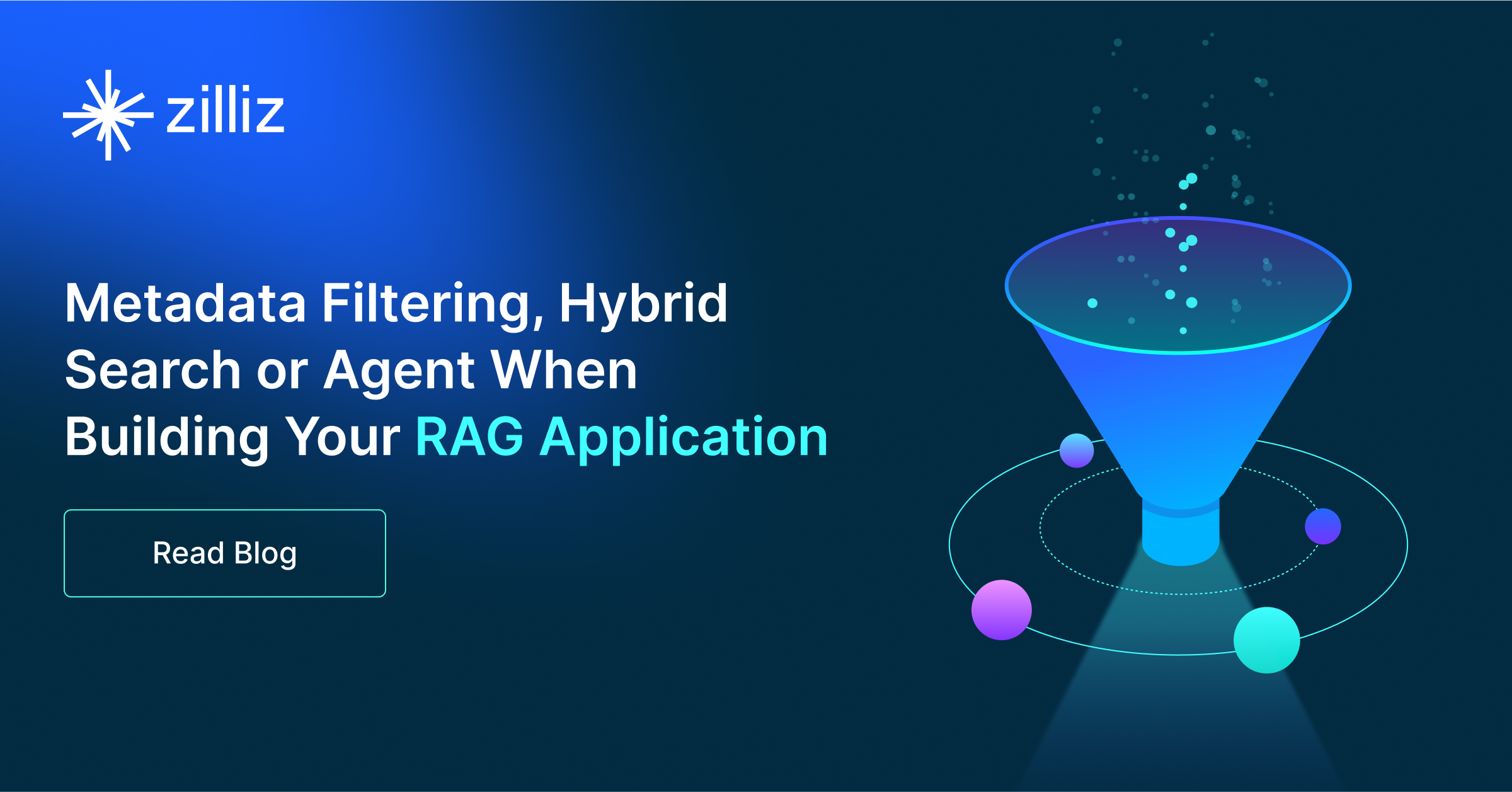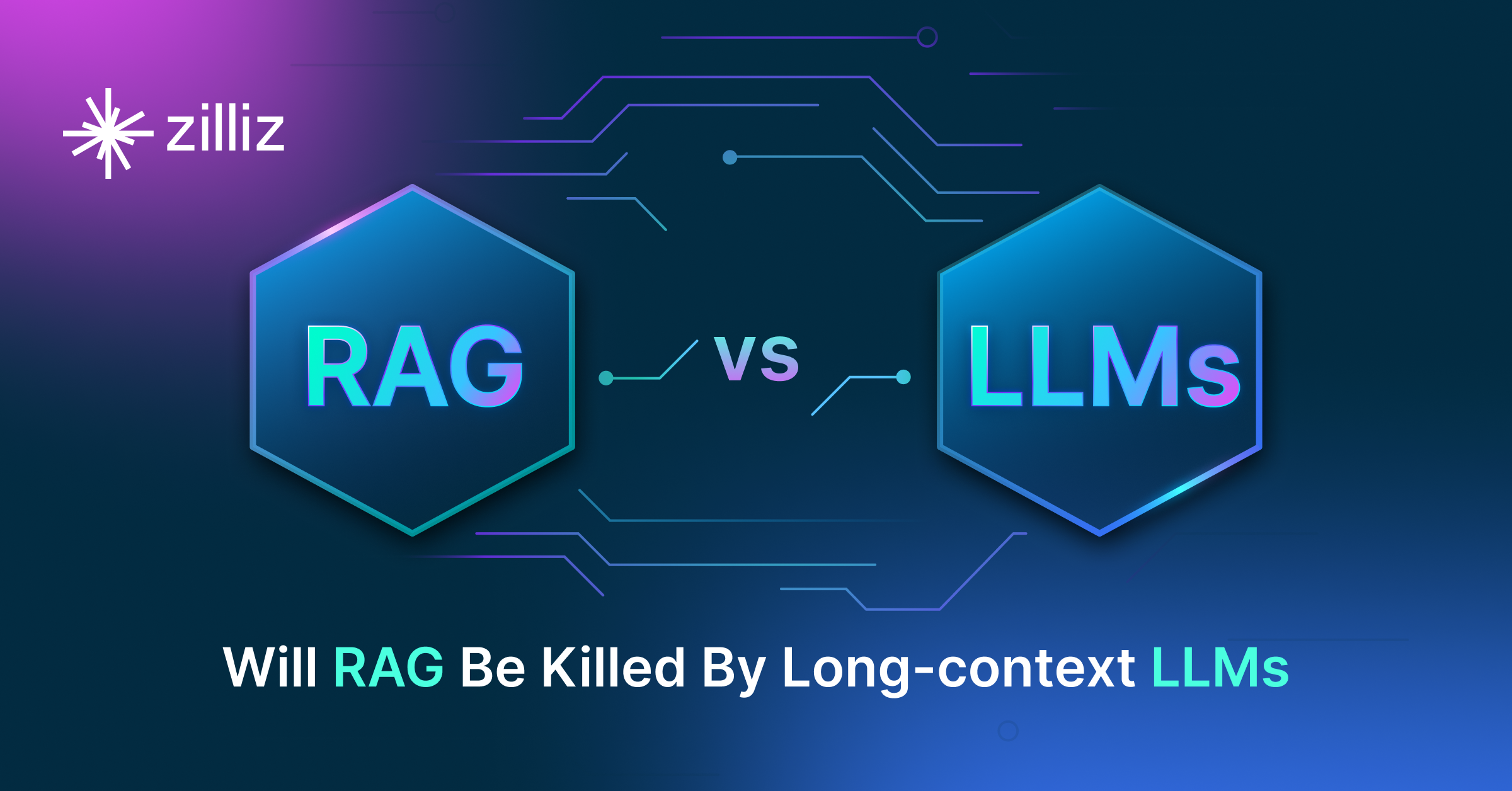Build RAG Chatbot with LangChain, Faiss, OpenAI GPT-4, and Cohere embed-english-light-v2.0
Introduction to RAG
Retrieval-Augmented Generation (RAG) is a game-changer for GenAI applications, especially in conversational AI. It combines the power of pre-trained large language models (LLMs) like OpenAI’s GPT with external knowledge sources stored in vector databases such as Milvus and Zilliz Cloud, allowing for more accurate, contextually relevant, and up-to-date response generation. A RAG pipeline usually consists of four basic components: a vector database, an embedding model, an LLM, and a framework.
Key Components We'll Use for This RAG Chatbot
This tutorial shows you how to build a simple RAG chatbot in Python using the following components:
- LangChain: An open-source framework that helps you orchestrate the interaction between LLMs, vector stores, embedding models, etc, making it easier to integrate a RAG pipeline.
- Faiss: also known as Facebook AI Similarity Search, is an open-source vector search library that allows developers to quickly search for semantically similar multimedia data within a massive dataset of unstructured data. (If you want a much more scalable solution or hate to manage your own infrastructure, we recommend using Zilliz Cloud, which is a fully managed vector database service built on the open-source Milvus and offers a free tier supporting up to 1 million vectors.)
- OpenAI GPT-4: GPT-4 is OpenAI's advanced language model, designed for comprehensive understanding and context-aware text generation. It excels in creative writing, complex problem-solving, and nuanced conversation, making it suitable for applications in content creation, tutoring, and interactive AI. Its robust capabilities enable it to handle a wide range of topics with depth and coherence.
- Cohere embed-english-light-v2.0: This lightweight embedding model is designed for efficient English text encoding, providing high-quality representations for various natural language processing tasks. It excels in scenarios requiring embedding generation with minimal computational resources, such as document similarity, clustering, and recommendation systems, ensuring fast performance without compromising accuracy.
By the end of this tutorial, you’ll have a functional chatbot capable of answering questions based on a custom knowledge base.
Note: Since we may use proprietary models in our tutorials, make sure you have the required API key beforehand.
Step 1: Install and Set Up LangChain
%pip install --quiet --upgrade langchain-text-splitters langchain-community langgraph
Step 2: Install and Set Up OpenAI GPT-4
pip install -qU "langchain[openai]"
import getpass
import os
if not os.environ.get("OPENAI_API_KEY"):
os.environ["OPENAI_API_KEY"] = getpass.getpass("Enter API key for OpenAI: ")
from langchain.chat_models import init_chat_model
llm = init_chat_model("gpt-4", model_provider="openai")
Step 3: Install and Set Up Cohere embed-english-light-v2.0
pip install -qU langchain-cohere
import getpass
import os
if not os.environ.get("COHERE_API_KEY"):
os.environ["COHERE_API_KEY"] = getpass.getpass("Enter API key for Cohere: ")
from langchain_cohere import CohereEmbeddings
embeddings = CohereEmbeddings(model="embed-english-light-v2.0")
Step 4: Install and Set Up Faiss
pip install -qU langchain-community
from langchain_community.vectorstores import FAISS
vector_store = FAISS(embedding_function=embeddings)
Step 5: Build a RAG Chatbot
Now that you’ve set up all components, let’s start to build a simple chatbot. We’ll use the Milvus introduction doc as a private knowledge base. You can replace it with your own dataset to customize your RAG chatbot.
import bs4
from langchain import hub
from langchain_community.document_loaders import WebBaseLoader
from langchain_core.documents import Document
from langchain_text_splitters import RecursiveCharacterTextSplitter
from langgraph.graph import START, StateGraph
from typing_extensions import List, TypedDict
# Load and chunk contents of the blog
loader = WebBaseLoader(
web_paths=("https://milvus.io/docs/overview.md",),
bs_kwargs=dict(
parse_only=bs4.SoupStrainer(
class_=("doc-style doc-post-content")
)
),
)
docs = loader.load()
text_splitter = RecursiveCharacterTextSplitter(chunk_size=1000, chunk_overlap=200)
all_splits = text_splitter.split_documents(docs)
# Index chunks
_ = vector_store.add_documents(documents=all_splits)
# Define prompt for question-answering
prompt = hub.pull("rlm/rag-prompt")
# Define state for application
class State(TypedDict):
question: str
context: List[Document]
answer: str
# Define application steps
def retrieve(state: State):
retrieved_docs = vector_store.similarity_search(state["question"])
return {"context": retrieved_docs}
def generate(state: State):
docs_content = "\n\n".join(doc.page_content for doc in state["context"])
messages = prompt.invoke({"question": state["question"], "context": docs_content})
response = llm.invoke(messages)
return {"answer": response.content}
# Compile application and test
graph_builder = StateGraph(State).add_sequence([retrieve, generate])
graph_builder.add_edge(START, "retrieve")
graph = graph_builder.compile()
Test the Chatbot
Yeah! You've built your own chatbot. Let's ask the chatbot a question.
response = graph.invoke({"question": "What data types does Milvus support?"})
print(response["answer"])
Example Output
Milvus supports various data types including sparse vectors, binary vectors, JSON, and arrays. Additionally, it handles common numerical and character types, making it versatile for different data modeling needs. This allows users to manage unstructured or multi-modal data efficiently.
Optimization Tips
As you build your RAG system, optimization is key to ensuring peak performance and efficiency. While setting up the components is an essential first step, fine-tuning each one will help you create a solution that works even better and scales seamlessly. In this section, we’ll share some practical tips for optimizing all these components, giving you the edge to build smarter, faster, and more responsive RAG applications.
LangChain optimization tips
To optimize LangChain, focus on minimizing redundant operations in your workflow by structuring your chains and agents efficiently. Use caching to avoid repeated computations, speeding up your system, and experiment with modular design to ensure that components like models or databases can be easily swapped out. This will provide both flexibility and efficiency, allowing you to quickly scale your system without unnecessary delays or complications.
Faiss Optimization Tips
To enhance the performance of the Faiss library in a Retrieval-Augmented Generation (RAG) system, begin by selecting the appropriate index type based on your data volume and query speed requirements; for example, using an IVF (Inverted File) index can significantly speed up queries on large datasets by reducing the search space. Optimize your indexing process by using the nlist parameter to partition data into smaller clusters and set an appropriate number of probes (nprobe) during retrieval to balance between speed and accuracy. Ensure the vectors are properly normalized and consider using 16-bit or 8-bit quantization during indexing to reduce memory footprints for large datasets while maintaining reasonable retrieval accuracy. Additionally, consider leveraging GPU acceleration if available, as Faiss highly benefits from parallel processing, leading to faster nearest neighbor searches. Continuous fine-tuning and benchmarking with varying parameters and configurations can guide you in finding the most efficient setup specific to your data characteristics and retrieval requirements.
OpenAI GPT-4 optimization tips
GPT-4 is a powerful model for RAG applications, but optimizing retrieval and prompt efficiency is key to reducing costs and improving response quality. Use embedding-based retrieval to ensure highly relevant context is included while avoiding unnecessary token usage. Structure prompts concisely, presenting retrieved documents in a clear, ranked format to guide the model’s focus. Fine-tune temperature (0.1–0.3) for fact-based tasks and adjust top-p and top-k sampling to control response variability. Implement caching for frequently queried information to reduce redundant API calls and improve latency. If using GPT-4 in high-traffic applications, batch requests to minimize overhead and optimize throughput. Leverage OpenAI’s function-calling capabilities to structure responses programmatically and avoid excessive hallucinations. Use response streaming for real-time applications to improve perceived performance while maintaining efficient token usage.
Cohere embed-english-light-v2.0 optimization tips
Cohere embed-english-light-v2.0 is designed for faster, more resource-efficient embedding generation in English-language tasks. To optimize processing, preprocess text by removing stopwords, punctuation, and unnecessary formatting to minimize the complexity of the input. Leverage vector compression techniques, such as quantization or PCA, to reduce storage requirements without sacrificing significant accuracy. For retrieval, implement hybrid search strategies that combine keyword search with dense vector search to achieve faster and more relevant results. Use multi-threading or parallel processing to handle large batches of embeddings efficiently. Apply caching for frequently queried embeddings to minimize re-processing and reduce query latency, especially for high-traffic RAG systems.
By implementing these tips across your components, you'll be able to enhance the performance and functionality of your RAG system, ensuring it’s optimized for both speed and accuracy. Keep testing, iterating, and refining your setup to stay ahead in the ever-evolving world of AI development.
RAG Cost Calculator: A Free Tool to Calculate Your Cost in Seconds
Estimating the cost of a Retrieval-Augmented Generation (RAG) pipeline involves analyzing expenses across vector storage, compute resources, and API usage. Key cost drivers include vector database queries, embedding generation, and LLM inference.
RAG Cost Calculator is a free tool that quickly estimates the cost of building a RAG pipeline, including chunking, embedding, vector storage/search, and LLM generation. It also helps you identify cost-saving opportunities and achieve up to 10x cost reduction on vector databases with the serverless option.
 Calculate your RAG cost
Calculate your RAG cost
What Have You Learned?
What have you learned? Wow, what an incredible journey we’ve been on together! Throughout this tutorial, you’ve seen how seamlessly integrating a robust framework like LangChain with a high-performance vector database like Faiss can create a cutting-edge Retrieval-Augmented Generation (RAG) system. Remember how we showcased the framework's magical ability to orchestrate the flow between components, making it incredibly easy to build intelligent applications? It’s like having a conductor lead a symphony where every instrument plays in perfect harmony!
We explored how the vector database powers ultra-fast searches, helping you retrieve relevant information in the blink of an eye, supercharging your applications with speed and efficiency. Then, we dove into the world of conversational AI with the OpenAI GPT-4 model, which takes it a step further. This isn’t just about churning out text; it’s about creating engaging dialogues that feel so natural, you’d think you were chatting with a human!
Moreover, we highlighted the embedding model, like Cohere's embed-english-light-v2.0, which enriches your data with semantic representations. It captures the essence of meaning, making sure the RAG system understands context like never before. Remember those optimization tips and the handy cost calculator? They’ll be your trusty companions as you venture out to fine-tune your projects!
Now, with all these tools and techniques at your fingertips, the possibilities are endless! It’s time to roll up your sleeves, start building, optimizing, and innovating your own RAG applications. Your creativity and passion are the keys to unlocking fresh ideas and extraordinary solutions. So, go on—dive in and make your mark in the world of AI! We can’t wait to see what you’ll create!
Further Resources
🌟 In addition to this RAG tutorial, unleash your full potential with these incredible resources to level up your RAG skills.
- How to Build a Multimodal RAG | Documentation
- How to Enhance the Performance of Your RAG Pipeline
- Graph RAG with Milvus | Documentation
- How to Evaluate RAG Applications - Zilliz Learn
- Generative AI Resource Hub | Zilliz
We'd Love to Hear What You Think!
We’d love to hear your thoughts! 🌟 Leave your questions or comments below or join our vibrant Milvus Discord community to share your experiences, ask questions, or connect with thousands of AI enthusiasts. Your journey matters to us!
If you like this tutorial, show your support by giving our Milvus GitHub repo a star ⭐—it means the world to us and inspires us to keep creating! 💖
- Introduction to RAG
- Key Components We'll Use for This RAG Chatbot
- Step 1: Install and Set Up LangChain
- Step 2: Install and Set Up OpenAI GPT-4
- Step 3: Install and Set Up Cohere embed-english-light-v2.0
- Step 4: Install and Set Up Faiss
- Step 5: Build a RAG Chatbot
- Optimization Tips
- RAG Cost Calculator: A Free Tool to Calculate Your Cost in Seconds
- What Have You Learned?
- Further Resources
- We'd Love to Hear What You Think!
Content
Vector Database at Scale
Zilliz Cloud is a fully-managed vector database built for scale, perfect for your RAG apps.
Try Zilliz Cloud for Free


